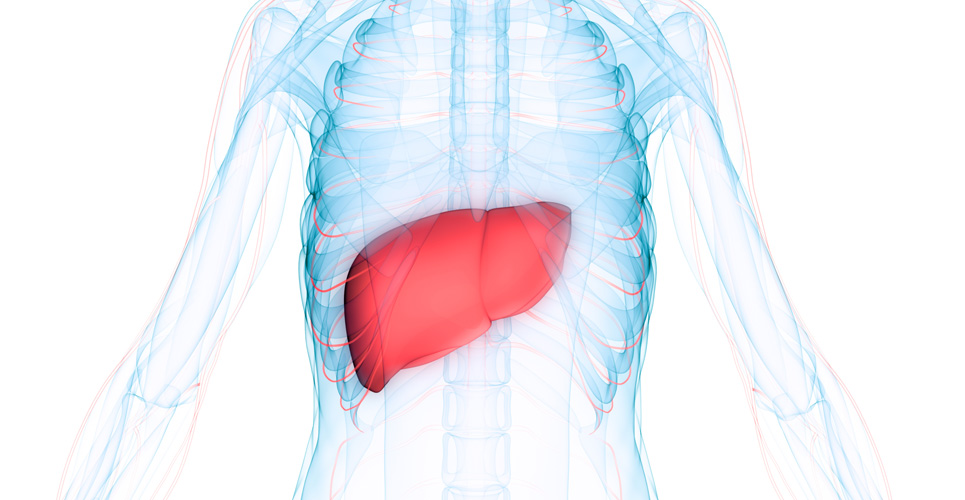Drug-induced liver disease is very common(1,2) and is the most frequent cause of drug withdrawal following post-marketing surveillance. For many drugs, patterns of hepatic toxicity do not become apparent until they have been widely used in clinical practice. The case of nefazadone is a recent example.
Hepatotoxicity is also frequently observed with established drugs and is a major cause of drug-related morbidity and mortality. It is often necessary for the practitioner to differentiate between drug-related hepatotoxicity and that due to disease, lifestyle factors (such as alcohol) or alternative medicine use. Drugs often cause a predominant pattern of toxicity (eg, for flucloxacillin, the reaction is predominantly cholestatic), so it is important to be able to identify a pattern of toxicity and relate this to observations usually reported with an individual drug. The pattern of toxicity includes: signs, symptoms, laboratory results (including liver function tests, or LFTs) and the time course (ie, when the reaction appeared in relation to the drug being started). Many drug reactions exhibit a mixed picture (ie, cholestatic and hepatocellular toxicity), and the reaction may not always be typical or definitive. Nevertheless, ascertaining the pattern of toxicity can be useful in identifying a potentially causative agent from a list of drugs that the patient may be taking.
Background questions
Medication history
A complete medication history is important and should include current medicines and all those taken in the last 2–3 months. Some drugs can cause hepatotoxicity several weeks after they have been stopped; thus, current medicines may not always be the causative agents.
Medication history should include prescribed medicines, over-the-counter preparations and herbal medicines and supplements. Details of the time course are very important: when were the drugs started or stopped, and when was hepatotoxicity identified, either from liver function tests or physical signs and symptoms?
Liver function tests
Results of LFTs should be obtained. If available, a trend of results over the last few days or weeks can be useful in identifying either developing or resolving toxicity.
Investigations should be comprehensive and include enzymes AST, ALT, GGT and ALP, bilirubin and albumin.
Other signs and symptoms
Other signs and symptoms that may be indicative of a possible drug reaction or hypersensitivity should be checked. For example, raised eosinophils, arthralgia, skin rash and fever in combination with raised LFTs are a good indication of drug hypersensitivity with hepatic involvement.
Exclusion of other causes
The investigator has to make sure that other causes of liver disease, such as infectious hepatitis and alcohol, have been excluded.
Background knowledge
As well as a knowledge of the general principles of adverse drug reactions (ADRs), the practitioner needs a sound knowledge of the pathophysiology of drug-induced liver disease and the interpretation of liver function tests.
It may be useful to research the pattern of toxicity in several key drugs, such as flucloxacillin, isoniazid and sodium valproate. Reading reviews and case reports will help in understanding the process of identification and differential diagnosis.
The ability to recognise the requirement for more information regarding a particular case is very important. LFTs are often incompletely reported, and a more comprehensive screen may be needed, rather than an isolated measurement of GGT or transaminases. Another useful exercise is to be able to clearly distinguish between cholestatic hepatitis and hepatocellular hepatitis, and to recognise hepatotoxicity due to a mixture of both.
Author
David Woods
MPharm MRPharmS
Drug Information Consultant and Senior Teaching Fellow
School of Pharmacy
University of Otago
Dunedin
New Zealand
E:[email protected]
References
- Cupp MJ. Herbal remedies: adverse effects and drug interactions. Am Fam Physician 1999;59:1239-45. Available from URL: www.aafp.org/afp/990301ap/1239.html
- Haller CA, Dyer JE, Ko R, Olson KR. Making a diagnosis of herbal-related toxic hepatitis. West J Med 2002;176:39-44. Available from URL:www.ewjm.com/cgi/content/full/176/1/39
Resources
Duke MN, editor. Meyler’s Side Effects of Drugs. London: Elsevier;1996
Davies DM. Adverse Drug Reactions. London: Chapman and Hall Medical; 1999
Lee A. Adverse Drug Reactions. London: Pharmaceutical Press; 2001
Merck Medicus: Drug-induced Liver Disease
W:merck.praxis.md/index.asp?page=bpm_brief&article_id=CPM02HP373 Drug-Induced Liver Injury: A National and Global Problem W:www.fda.gov/cder/livertox/
Clinical Picture of Liver Disease
W:www.fda.gov/cder/livertox/stateArt.htm#Clinical%20Picture HepNet W:www.hepnet.com/hepc/ulibd00/swain.html
Emergency
medicine: drug hepatotoxicity
W:www.emedmag.com/html/pre/gic/consults/101500.asp

